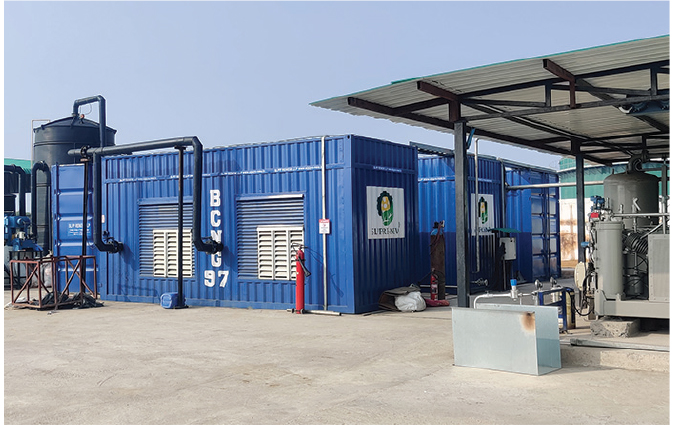
 By N.S. Mohan, CEO, SLPP “RE-NEW”, and Praveen Mohan Badiger, COO, SLPP “RE-NEW”
By N.S. Mohan, CEO, SLPP “RE-NEW”, and Praveen Mohan Badiger, COO, SLPP “RE-NEW”
Compressed biogas (CBG), which is essentially an enriched form of biogas with over 90 per cent methane, has emerged as a promising fuel globally. This is because in addition to being an environmentally sustainable power source, CBG has played an important role in helping countries transition to a circular economy by linking organic municipal solid waste and industrial/agricultural waste management systems to gas production plants.
In essence, it has taken waste that would have otherwise been a source of methane gas pollution, a greenhouse gas, and converted it into a source for renewable fuel with comparable revenue opportunities that are sustainable over the long term.
Role of SATAT initiative
In 2018, the Indian government launched the Sustainable Alternative towards Affordable Transportation (SATAT) initiative to reduce the country’s dependence on crude oil imports to meet its transportation requirements. This initiative largely advocates a switch to CBG as the fuel for transport from petrol, diesel, liquefied petroleum gas and compressed natural gas. Besides being a relatively clean burning fuel, CBG can be produced from agricultural residue, cattle dung and municipal solid waste – all of which are in abundant supply in India. The added benefit is that the residual matter left behind after the extraction of CBG can be utilised as fertiliser, thus eliminating the waste otherwise destined for the landfill.
With the implementation of SATAT, the transition to CBG will not only benefit vehicle users because of cheaper fuel costs, but the setting up of CBG plants across the country will also bring in added revenue to farmers, generate rural employment with around 75,000 direct jobs (and several thousand indirect ones), and encourage individuals to take up entrepreneurship.
Under the SATAT initiative, the government plans to set up 5,000 CBG plants by 2023, and with this goal in mind a production offtake guarantee is being offered to attract stakeholders to invest in setting up these facilities. The government is also incurring an expenditure of Rs 750 billion for setting up the required infrastructure for the distribution of CBG in cities.
While entrepreneurs and original equipment manufacturers can avail of capital to set up CBG plants under the SATAT scheme, the methods currently available for the extraction of methane from raw biogas need to be evaluated so that they are able to fully utilise their investments.
Although conventional technologies for biogas purification such as water scrubbing have existed for ages, global innovators have since developed newer systems that promise a better and consistent yield of CBG suitable for distribution via cascades and the gas grid. Apart from better yield, new technologies are more sustainable and eco-friendly in their operation. One such breakthrough for biogas upgradation is Evonik’s SEPURAN® Green Membrane technology. SEPURAN® Green Membranes have the highest CO2/CH4 selectivity, which enables them to extract biomethane from raw biogas with a purity level of up to 99 per cent. Membrane separation technology is particularly alluring for biogas advancement owing to lower energy consumption; high selectivity; consistent supply of biomethane as per the specified quality and purity, fit for direct injection into the gas grid; less methane loss; absence of effluents; containerised modular construction for ease of setting up and subsequent scalability; and low operating costs. All these benefits may incentivise investors and entrepreneurs to opt for such technologies that are profitable and environment friendly at the same time.
While cost plays a key role in shortlisting technology for biogas purification, it is important to remain cognisant of the long-term implications of using technologies that are not friendly to the environment. After all, CBG is intended to be a green and sustainable fuel source that will only be so if the processing that goes into its production remains eco-friendly as well.





